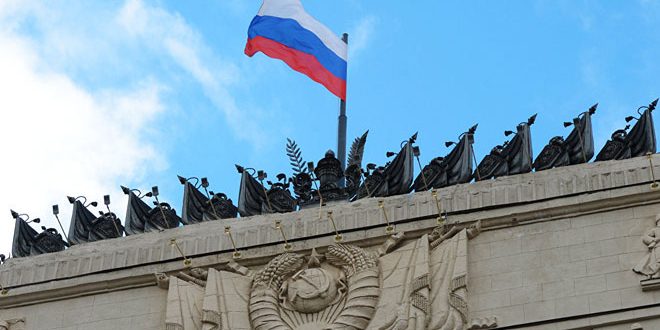On Thursday, the Russian Defense Ministry affirmed that the areas with a US military presence in al-Tanaf near the Syrian-Iraqi border have witnessed a significant increase in the number of Islamic State (ISIS) terrorists.
Chief of the Main Operations Directorate of the General Staff of the Russian Armed Forces General Sergei Rudskoy said in a briefing, published by the Russian Defense Ministry, that the al-Tanaf area, where the US forces are deployed, is witnessing an increase in the number of ISIS terrorists who are attempting to launch attacks on towns in Suweida, Damascus Countryside, Tadmur (Palmyra) east of Homs and Deir-ez-Zor.
He added that terrorists are using the al-Rukban Camp for shelter, which is close to where the US troops are deployed. He warns that there is a dangerous situation in the camp where about 60,000 displaced people suffer difficult living conditions.
Rudskoy called on the US, to secure humanitarian access to the camp as soon as possible and facilitate the return of the displaced to their villages and towns and work to close their base in the area.
The operations of the Syrian Arab Army in southern Syria led to the elimination of ISIS and Jabhat al-Nusra in Suweida, Daraa and Quneitra. The Syrian army carried out its operations upon the demands of the residents to protect them from the terrorist activities of the two organizations listed on the international terrorism list, according to the Russian military official.
He added that in light of the failure of the US and Jordan to take any steps to stabilize the situation as guarantors of the de-escalation zone in southern Syria, the Syrian army was able to liberate the area, which created suitable conditions for the return of the displaced to their homes in villages and towns currently undergoing demining, reconstruction and the rehabilitation of social and economic facilities.
The statement also expressed concern about the escalating situation in the de-escalation zone in Idleb as a result of the terrorists targeting the Syrian army and residential areas in Aleppo, Hama and Lattakia.
This article was edited by The Syrian Observer. Responsibility for the information and views set out in this article lies entirely with the author.


